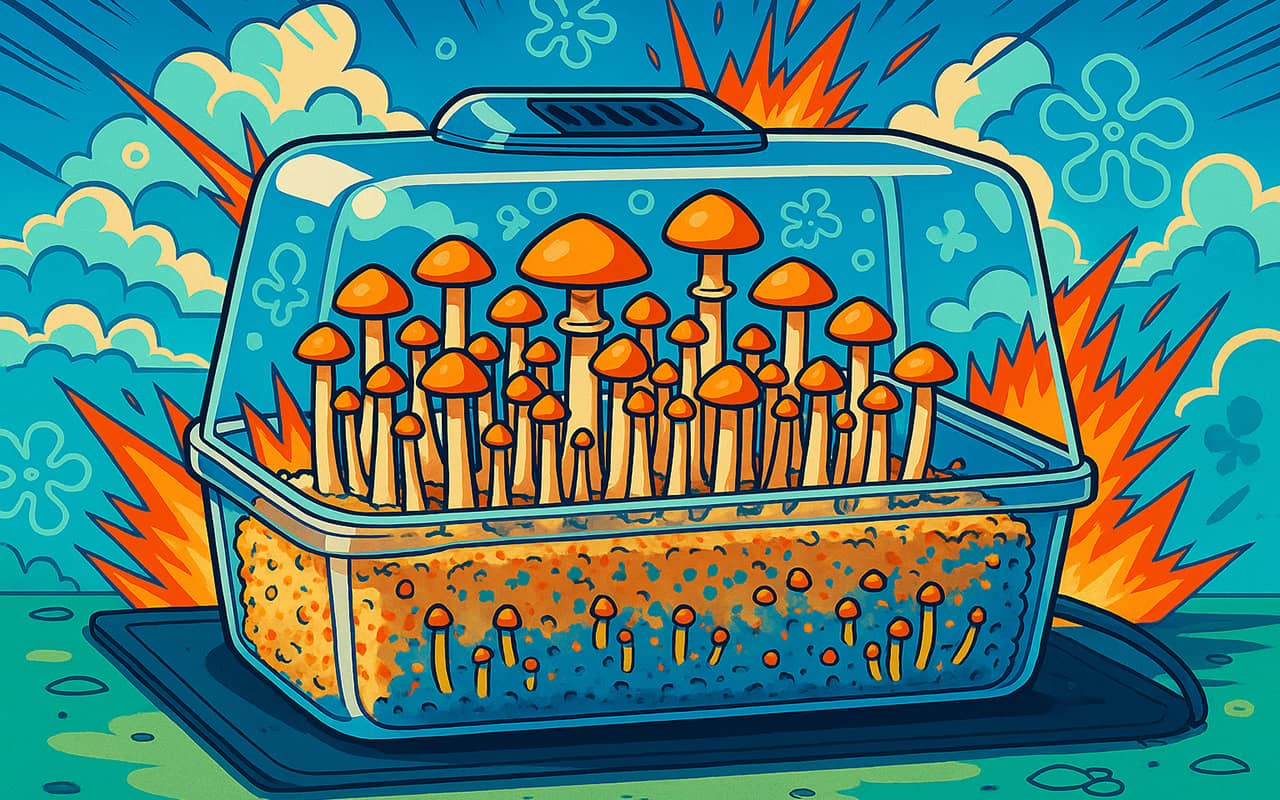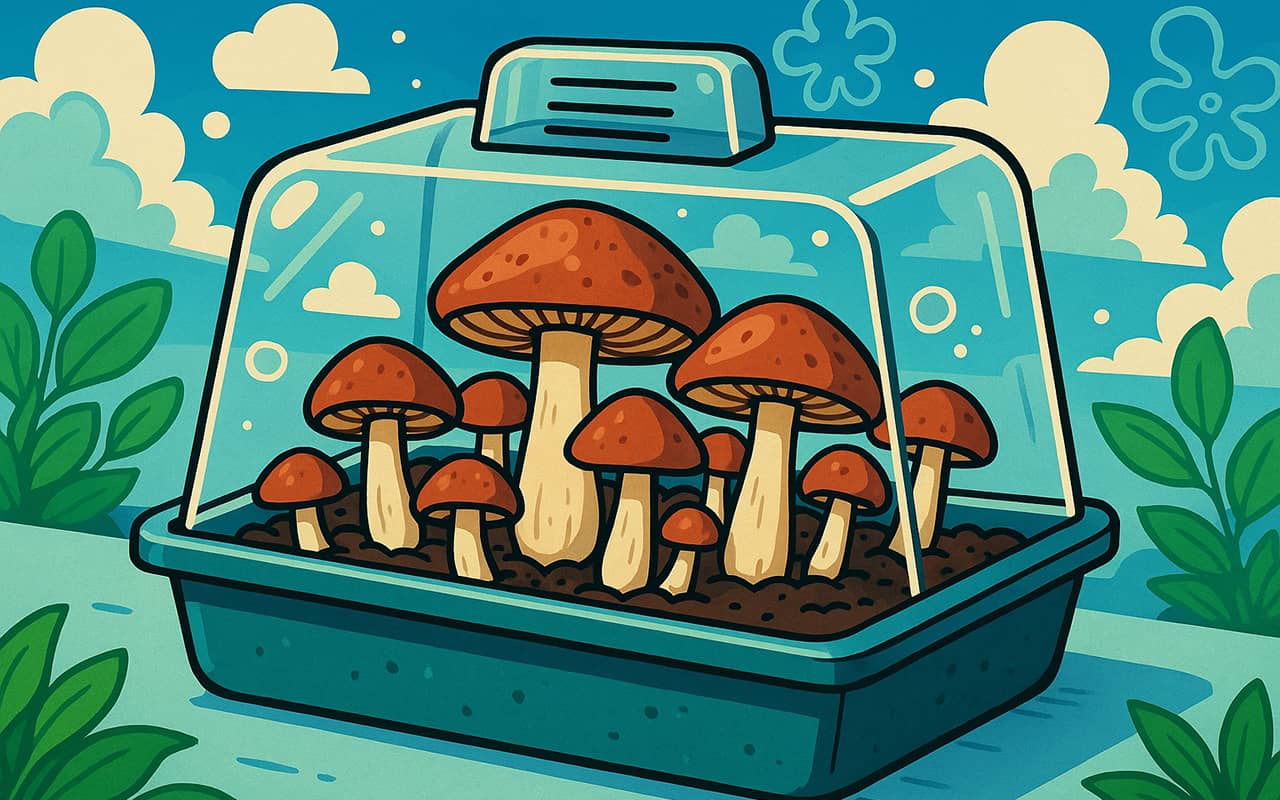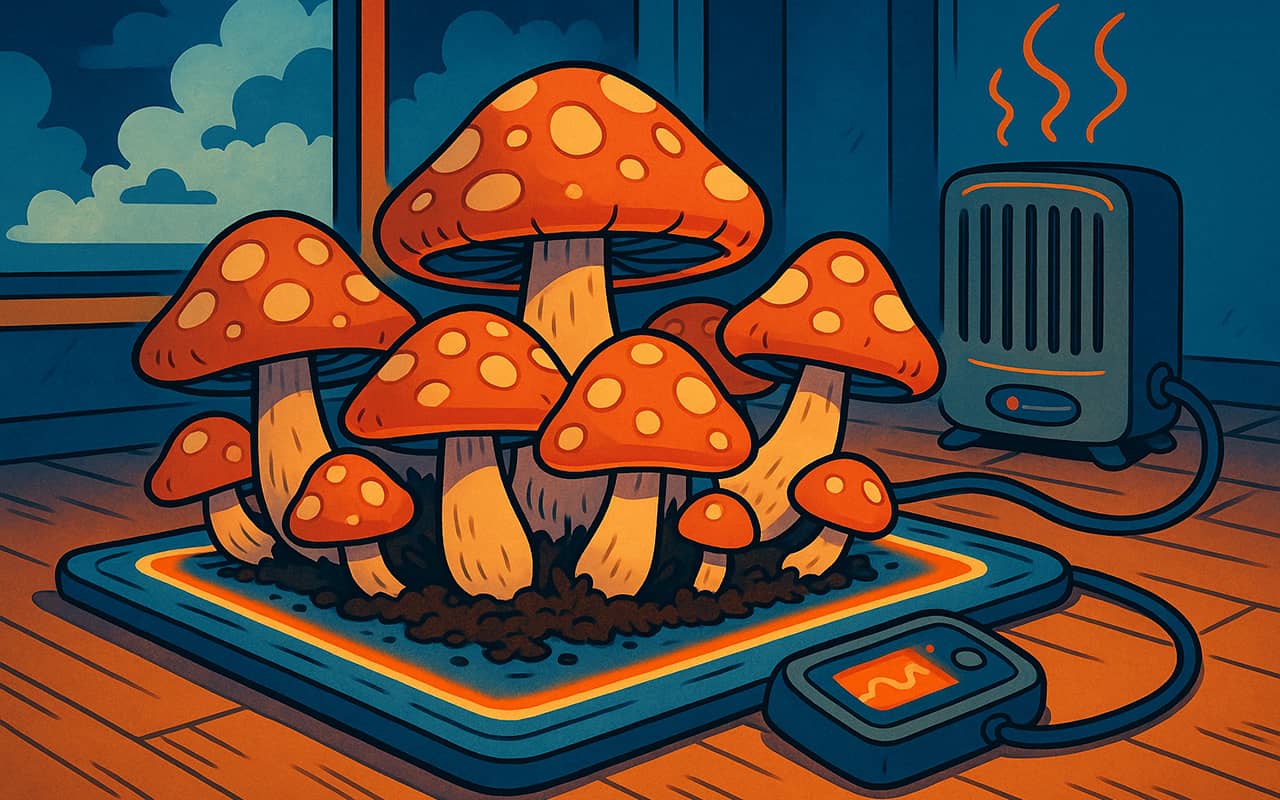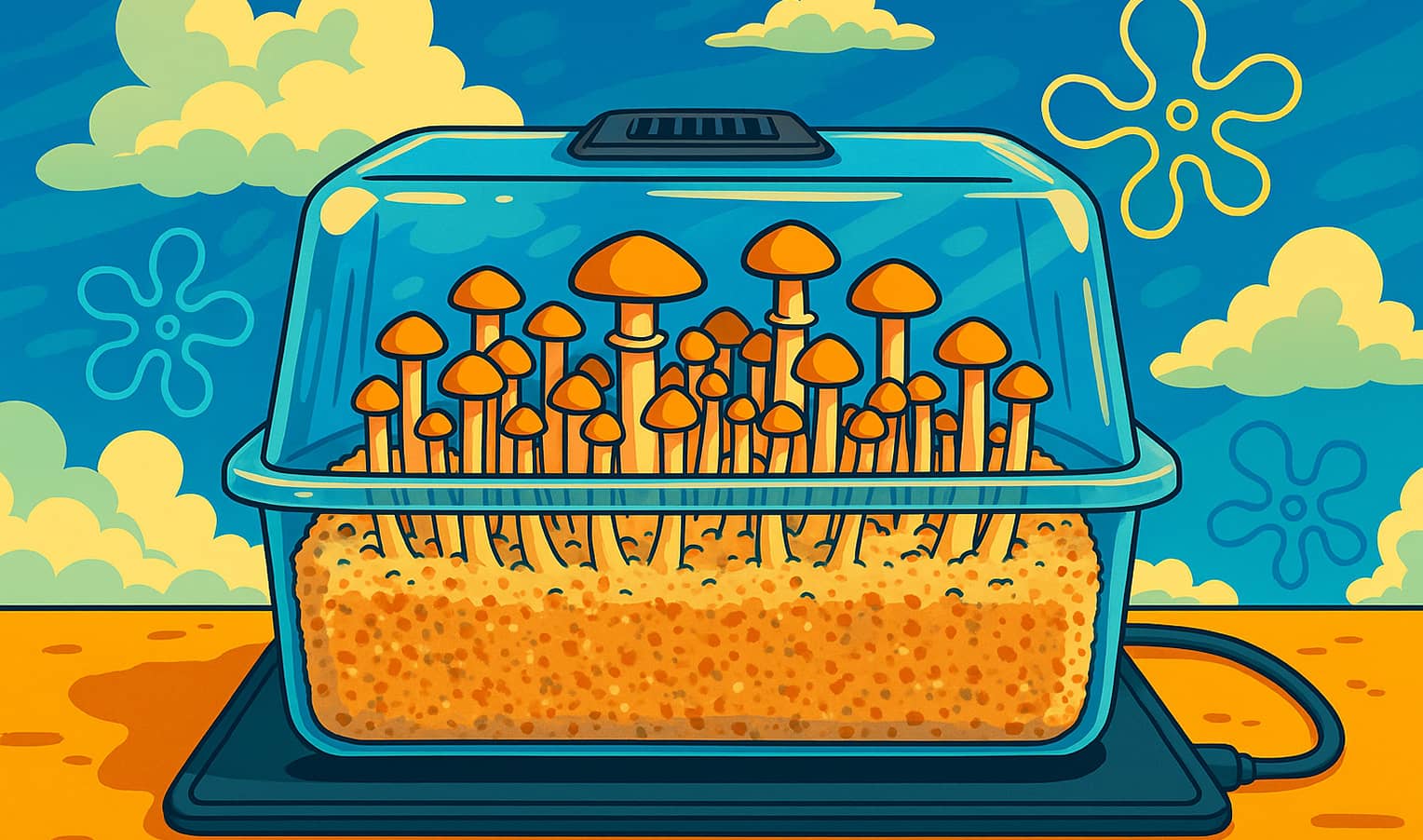Every mushroom grower starts with the basics: plastic trays, bags, a bit of moisture, and heat from a radiator. These methods work well at the beginning, allowing you to understand the process and enjoy homegrown mushrooms. But over time, this is not enough. If we want bigger yields, stability, and a more professional approach, the next step is needed. Most often, this step is using the “propagator + heating mat” combination. This tandem provides a controlled microclimate, reduces contamination risks, and boosts productivity.
Basics of home mushroom growing

Growing mushrooms at home today is accessible to anyone. It is not only an exciting hobby but also a way to enrich daily life and even add a bit of science into the routine. The main thing to remember is that mushrooms are much more sensitive to the environment than most plants. A single wrong parameter can quickly destroy the whole batch. That’s why it is important to know the basic conditions:
- Hygiene. Cleanliness of the process — from the room and hands to tools — is the first defense against contamination and mold.
- Humidity. Most mushrooms thrive at 80–85% relative humidity: enough moisture but without water stagnation.
- Temperature. The majority of species grow well within 20–25 °C.
- Ventilation. Light air circulation prevents CO₂ buildup; otherwise, mushrooms will stop growing.
- Light. Direct sunlight is not needed, but a basic “light–dark” rhythm is important.
If all these conditions are met, even a beginner can expect a good harvest. But then comes the question of stability, and that’s where special tools come in.
Propagator: a mini greenhouse for mushrooms

A propagator is a compact transparent structure with ventilation holes. It creates a closed environment where humidity and temperature are easy to maintain. It also protects mushroom blocks from drafts, dust, and insects. Several containers or bags can be placed inside, making it ideal for home use.
Before use, disinfect the propagator with an alcohol solution to reduce contamination risk. After that, it becomes a nearly perfect “luxury suite” for your mushrooms.
Heating mat: an invisible heat source

If the propagator is the room, the heating mat is the heater maintaining optimal temperature. It is especially useful in colder seasons when room temperature drops. The mat is very energy-efficient, distributes heat evenly, and stimulates mycelium activity. As a result, fruiting is faster and yields are richer.
Another advantage is the absence of sudden temperature fluctuations, which often stress mushrooms.
How to get the best results
The combination of a propagator and heating mat is already a semi-professional level. But there are still some nuances to consider. Here are a few tips:
- place the mat on an insulating base so heat doesn’t escape downward;
- raise the propagator slightly (1–2 cm) above the mat to avoid overheating and excess condensation;
- use a hygrometer and thermometer to monitor internal conditions;
- mist the propagator walls once or twice daily, but avoid wetting the substrate;
- vent briefly to refresh air and reduce CO₂ levels;
- if there is no thermostat, control mat working time manually depending on the season;
- cover ventilation holes with microporous tape or fine mesh to prevent contamination.
These measures help prevent contamination, maintain a stable microclimate, and make yields more predictable.
Conclusion
Home mushroom farming may start out as an experiment, but it quickly turns into a fascinating science. And if you're past the “baby stage” of growing mushroom spores on a battery, the next step is to use tools for stability and control.
The propagator and heating mat are simple, affordable, and highly effective helpers. They help achieve abundant harvests, reduce contamination risks, and make the growing process pleasant and stress-free.

